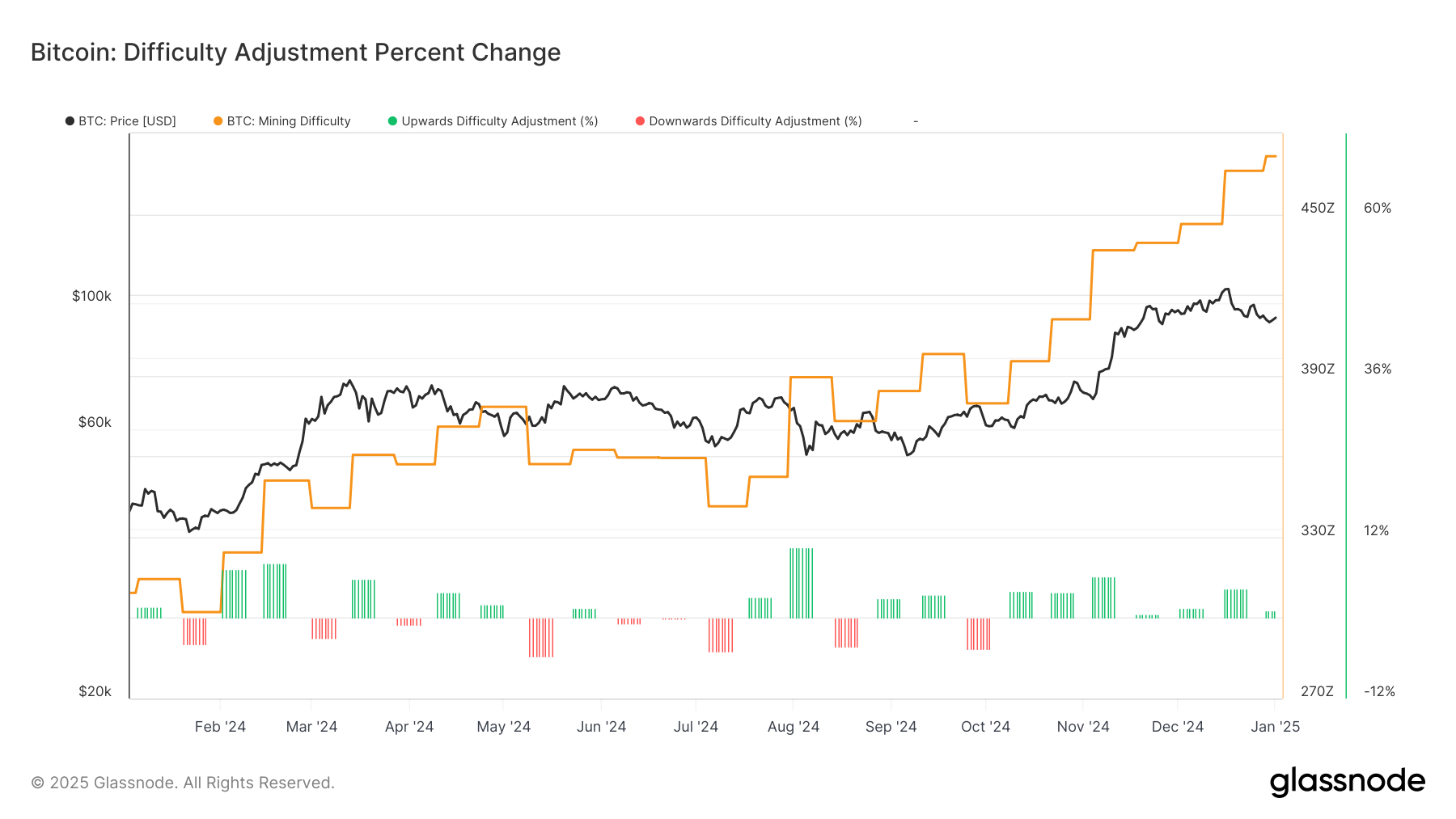Bitcoin Hashrate Expected to Reach 1 Zettahash Per Second by 2027
Bitcoin's (BTC) hashrate is projected to reach 1 zettahash per second (ZH/s) before the next halving event in approximately 3.5 years. This increases pressure on miners to secure affordable power deals and acquire more efficient equipment.
The average hashrate could attain this level, equivalent to 1,000 exahash per second (EH/s), by 2027 even with a modest annual growth rate of 20%. It has increased at an average rate of 65% annually since 2020 and currently stands at about 787 EH/s based on a seven-day moving average, according to Glassnode data.
Hashrate significantly impacts miners' profitability; higher hashrate correlates with increased energy costs, making operational optimization crucial. Network security has risen by 56% over the past year, underlining the importance of hashrate stability.
The growth rate accelerated in the latter half of 2024 following April's halving, which reduced block rewards by 50% to 450 BTC daily. This revenue drop pressured some miners to diversify operations into artificial intelligence (AI) computing or to purchase bitcoin on the open market.
As hashrate approaches 1 ZH/s, miners will need innovative strategies to navigate a tougher market.

Reports suggest that the hashrate may have already reached 1 ZH/s for a single block, although this reading lacks accuracy due to mining's probabilistic nature, block time variability, and short-term network fluctuations. A seven-day moving average is typically used for reliability.
Mining difficulty is also increasing, with the blockchain experiencing seven consecutive positive adjustments since October, now at 109.78 trillion (T). Difficulty adjusts every 2,016 blocks to maintain a ten-minute block production target. The last occurrence of seven consecutive positive adjustments followed China's mining ban in 2021, which caused a 50% hashrate drop.
This time, both hashrate and difficulty are rising concurrently.
